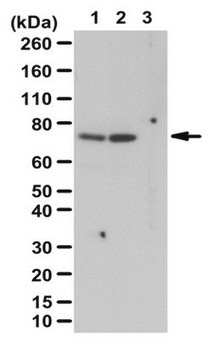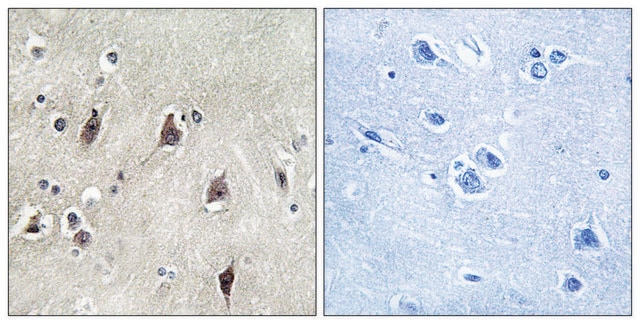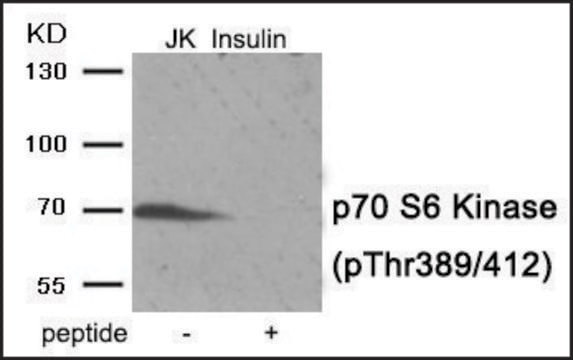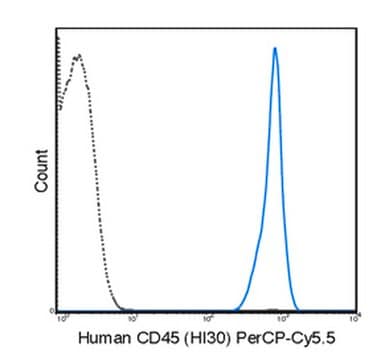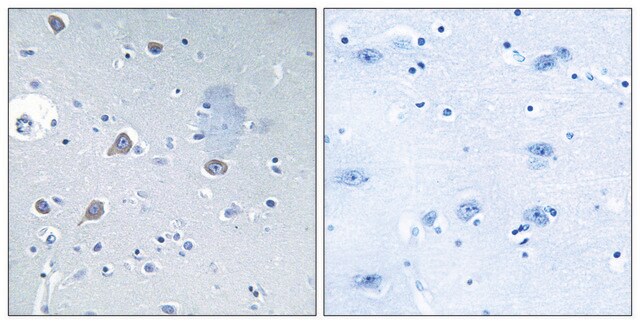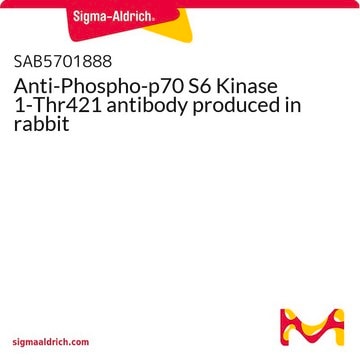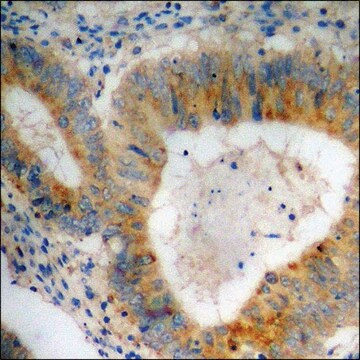MABS82
Anti-phospho-p70 S6 Kinase (Thr389) Antibody, clone 10G7.1
clone 10G7.1, from mouse
Synonyme(s) :
Ribosomal protein S6 kinase beta-1, S6K-beta-1, S6K1, 70 kDa ribosomal protein S6 kinase 1, Short name=P70S6K1, p70-S6K 1, Ribosomal protein S6 kinase I, Serine/threonine-protein kinase 14A, p70 ribosomal S6 kinase alpha, p70 S6 kinase alpha, p70 S6K-alp
About This Item
Produits recommandés
Source biologique
mouse
Niveau de qualité
Forme d'anticorps
purified antibody
Type de produit anticorps
primary antibodies
Clone
10G7.1, monoclonal
Espèces réactives
human, mouse
Technique(s)
immunocytochemistry: suitable
western blot: suitable
Isotype
IgG2aκ
Numéro d'accès NCBI
Numéro d'accès UniProt
Conditions d'expédition
wet ice
Modification post-traductionnelle de la cible
phosphorylation (pThr389)
Informations sur le gène
human ... RPS6KB1(6198)
Description générale
Spécificité
Immunogène
Application
Signaling
Cell Cycle, DNA Replication & Repair
Qualité
Western Blot Analysis: 1 µg/mL of this antibody detected p70 S6 Kinase on 10 µg of untreated and serum treated NIH/3T3 cell lysates.
Description de la cible
Liaison
Forme physique
Stockage et stabilité
Remarque sur l'analyse
Untreated and serum treated NIH/3T3 cell lysates
Autres remarques
Clause de non-responsabilité
Not finding the right product?
Try our Outil de sélection de produits.
Code de la classe de stockage
12 - Non Combustible Liquids
Classe de danger pour l'eau (WGK)
WGK 1
Point d'éclair (°F)
Not applicable
Point d'éclair (°C)
Not applicable
Certificats d'analyse (COA)
Recherchez un Certificats d'analyse (COA) en saisissant le numéro de lot du produit. Les numéros de lot figurent sur l'étiquette du produit après les mots "Lot" ou "Batch".
Déjà en possession de ce produit ?
Retrouvez la documentation relative aux produits que vous avez récemment achetés dans la Bibliothèque de documents.
Notre équipe de scientifiques dispose d'une expérience dans tous les secteurs de la recherche, notamment en sciences de la vie, science des matériaux, synthèse chimique, chromatographie, analyse et dans de nombreux autres domaines..
Contacter notre Service technique